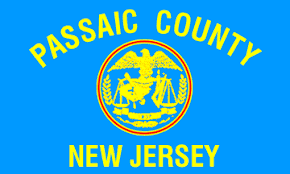Paterson, NJ: Silk City, Struggle, and the Soul of North Jersey
Rising along the Passaic River and cradled by the Great Falls, Paterson, New Jersey is a city woven from labor, language, and legacy. Founded by Alexander Hamilton to power America’s industrial revolution, Paterson has long been a home for workers, immigrants, and artists shaping the future from the margins. Today, this majority-Black and brown city is still building, still dreaming, and still demanding to be seen beyond the headlines. Paterson isn’t perfect—but it’s powerful.
Origin and History
Paterson was born of vision—and built by the hands of immigrants and Black laborers.
- Lenape Homeland: Long before industry, the land surrounding the Passaic Falls was part of the Lenape people’s ancestral territory, used for fishing, farming, and seasonal trade.
- Founding Vision: Established in 1791 by Alexander Hamilton as America’s first planned industrial city, Paterson was powered by the Great Falls and became known as the “Silk City.”
- Immigrant Power: From Irish and Italian mill workers to Arab, Jewish, and Eastern European families, generations of immigrants built the city’s factories and neighborhoods.
- Labor History: Paterson was the site of the 1913 Silk Strike—led by working women and radical organizers—and remains a symbol of labor resistance in U.S. history.
- Black Migration & Latinx Resurgence: In the 20th century, Paterson became home to Southern Black migrants, Dominicans, Puerto Ricans, Peruvians, and today, one of the largest Arab American communities in the country.
Demographics
Paterson is multicultural, multilingual, and majority Black and brown.
- Population: Approx. 160,000 residents (2020 U.S. Census)
- Cultural Composition: Roughly 60% Latinx (primarily Dominican, Peruvian, Puerto Rican), 30% Black (African American, Caribbean, African immigrant), and 10% Arab American, South Asian, and other.
- Languages Spoken: Spanish, Arabic, Bengali, Haitian Creole, and English are spoken across homes, businesses, and classrooms.
- Immigrant Life: Over 35% of residents are foreign-born, many of whom are navigating work, schooling, documentation, and survival with limited institutional support.
Geographic Location and Size
Paterson is central to Passaic County and to North Jersey’s story.
- Size: 8.4 square miles
- Borders: Clifton, Haledon, Totowa, Woodland Park, and Prospect Park.
- Transit Access: Served by NJ Transit rail and buses, Paterson connects easily to NYC, Newark, and nearby cities via Routes 80, 46, and the Garden State Parkway.
Where We Thrive
Paterson’s power is in its people, not its politics.
- Public Schools: Paterson Public Schools serve over 25,000 students. Despite systemic underfunding, educators and youth leaders build programs in bilingual education, arts, STEM, and civic engagement.
- Cultural Districts: From Peru Square to South Paterson’s Arab American strip, from Broadway’s Caribbean shops to historic African American churches—culture isn’t a side story in Paterson, it’s the main plot.
- Youth & Art: Mural projects, youth poetry slams, and collectives like Silk City Arts transform vacant walls and voices into movements.
- Faith & Family: Mosques, Pentecostal churches, bodegas, Black barbershops, and halal eateries are more than services—they’re sanctuaries.
Fun Facts and Local Gems
- Great Falls National Historical Park: One of the nation’s largest waterfalls and a symbol of both natural beauty and industrial power.
- Silk City Legacy: Paterson was once the world capital of silk production; today, it’s a symbol of community resilience and labor justice.
- Hinchliffe Stadium: A newly restored Negro League stadium and National Historic Landmark—now a center for sports and Black cultural heritage.
- City of Poets: From William Carlos Williams to local spoken-word youth, Paterson has long produced voices who speak truth from the margins.
Challenges and Change
Paterson survives on love—but it deserves justice, too.
- Underfunded Services: Chronic state neglect has left public schools, housing, and infrastructure under-resourced for decades.
- Housing Insecurity: Gentrification from nearby towns and predatory landlords are pushing out longtime residents.
- Gun Violence & Mental Health: Youth in particular face rising trauma—with far too few services, safe spaces, or trusted adult systems to turn to.
- Political Cynicism: Corruption and neglect have eroded trust, but local organizers, educators, and young people are pushing for real, people-powered change.
Community Voices
“We’re not a comeback story—we’ve been here. Raising kids, building businesses, defending our block, teaching each other how to live. We’re not waiting for permission to matter.”
— Jazmine A., Paterson educator and community advocate
Why Paterson Matters
Paterson is the beating heart of North Jersey. Not because it’s wealthy—but because it’s alive. It’s a city that has housed Black migrants, fed Arab and Dominican families, launched poets and revolutionaries. Its struggles are real—but so is its joy. And if New Jersey is serious about justice, equity, and the future, Paterson must be at the center.
HFYC uplifts Paterson because visibility is power—and this city has always had power. It’s time everyone else caught up.
Call to Action
Are you from Paterson? Know a youth leader, teacher, healer, artist, elder, or corner-store owner whose story needs to be told?
Let’s help share it.
Submit a feature, nominate a change maker, or reflect on what Paterson means to you—from the Great Falls to your great-grandmother’s kitchen table.
